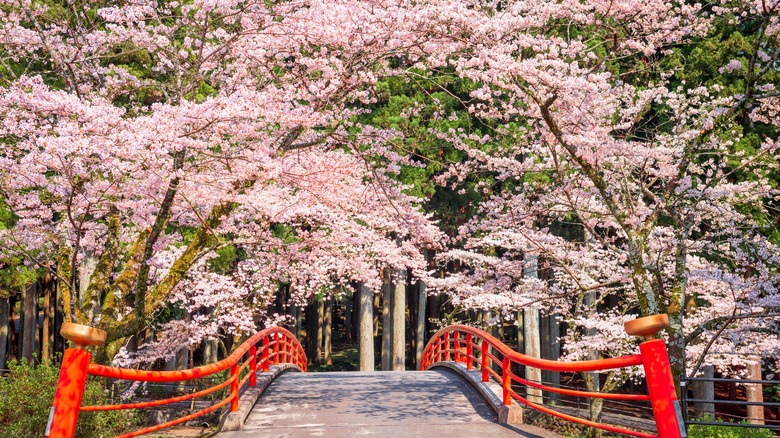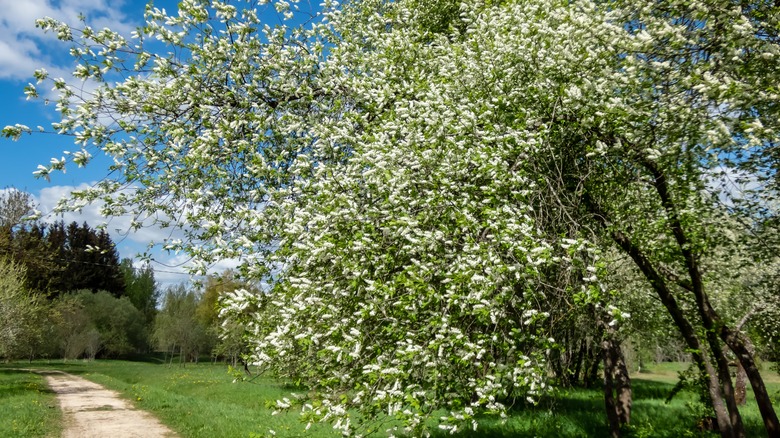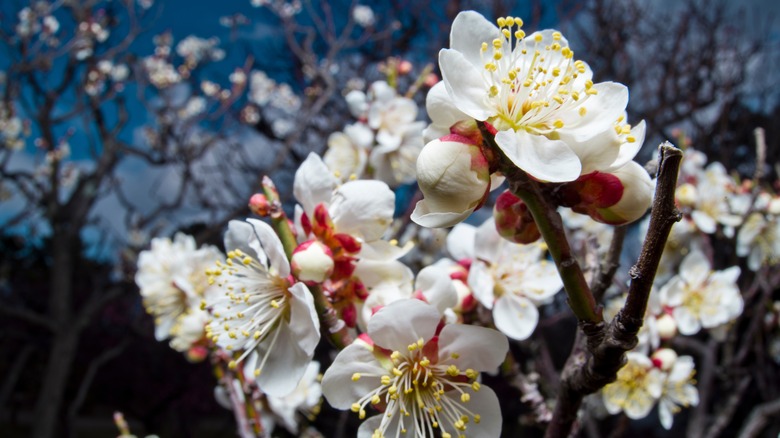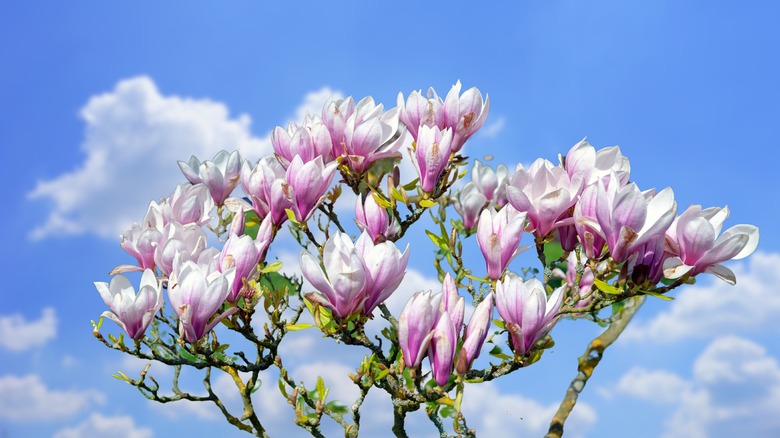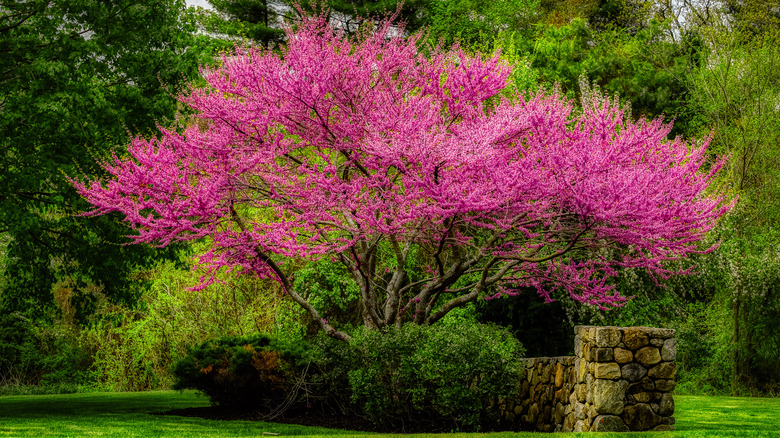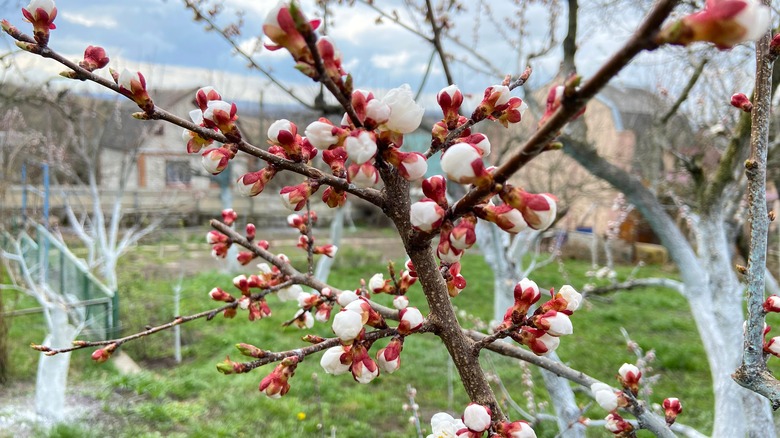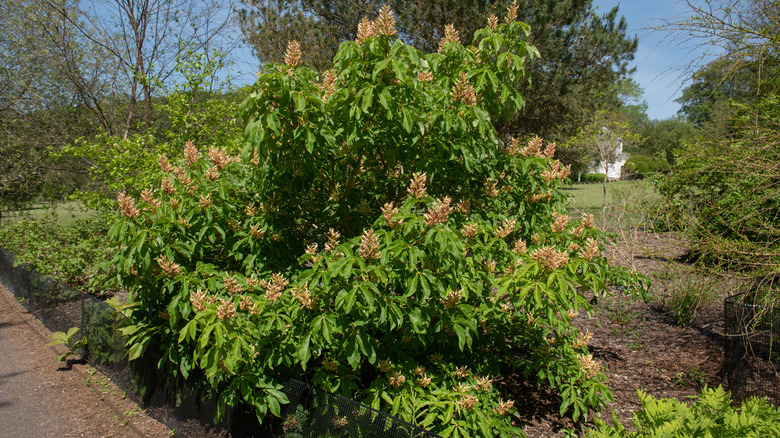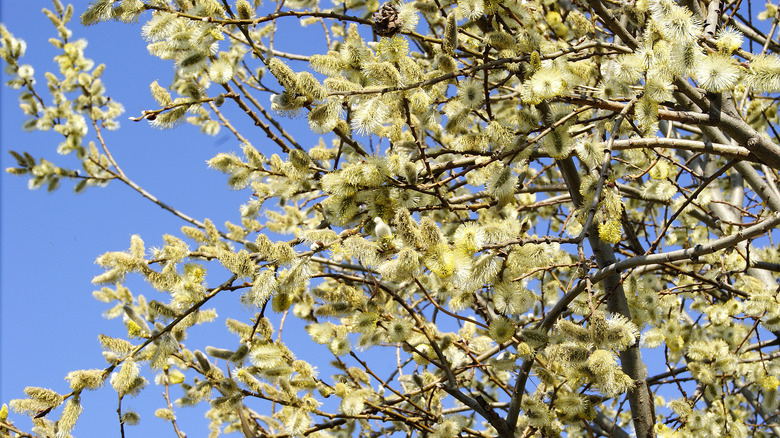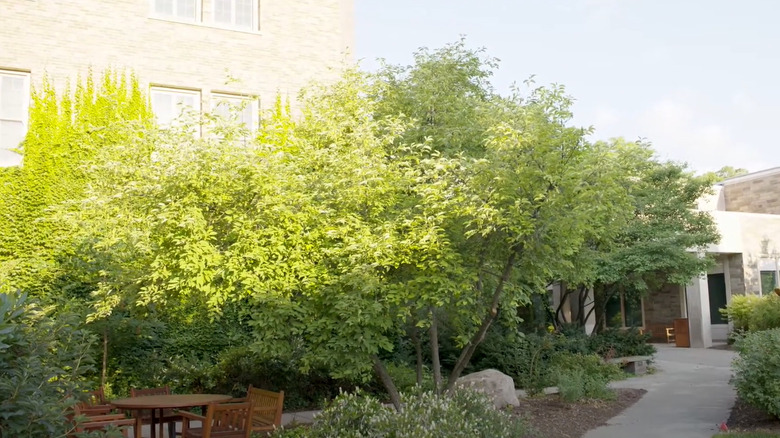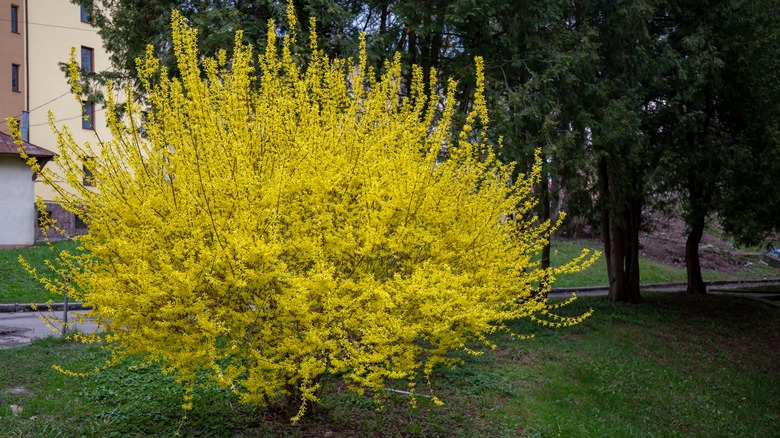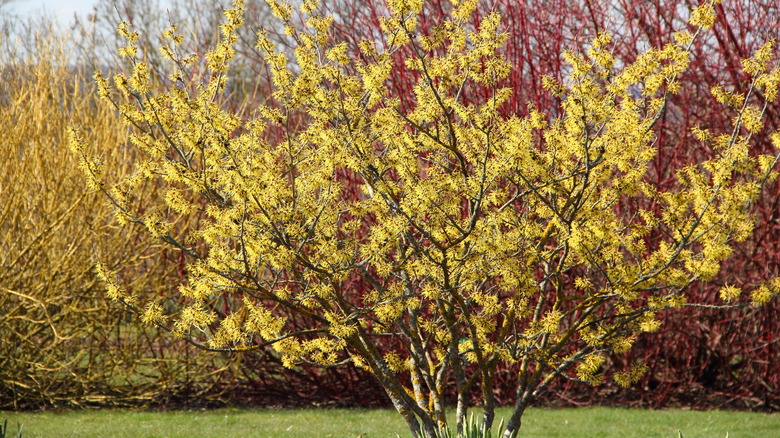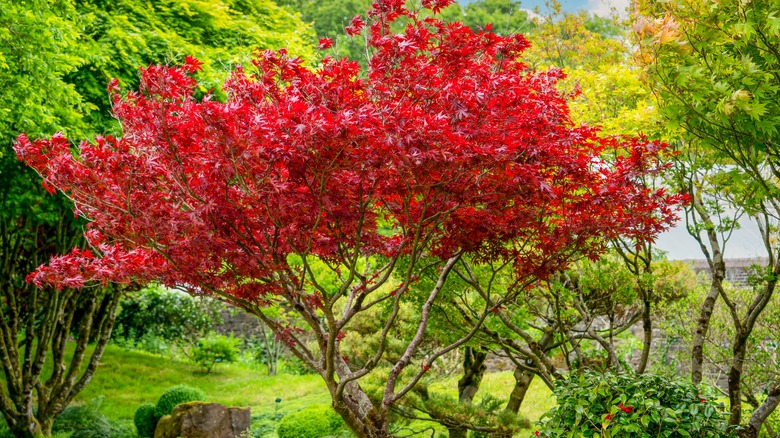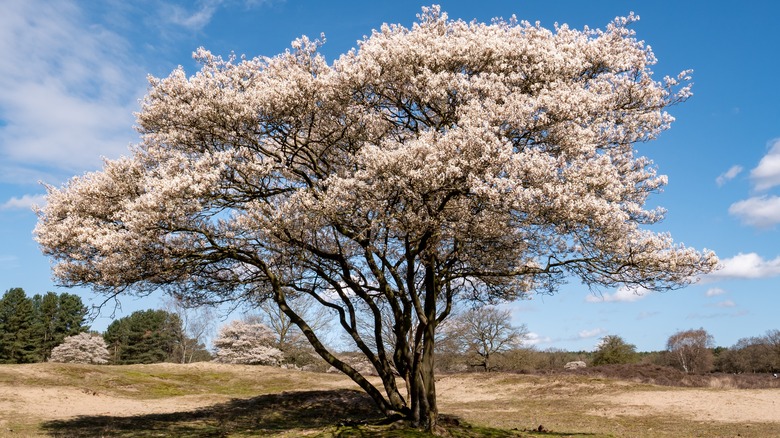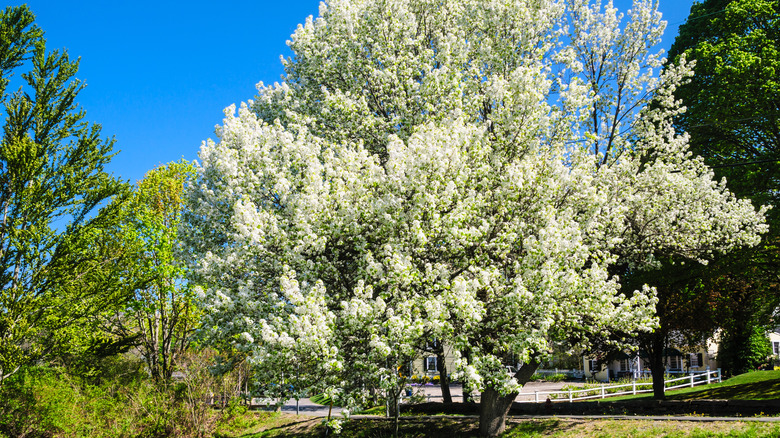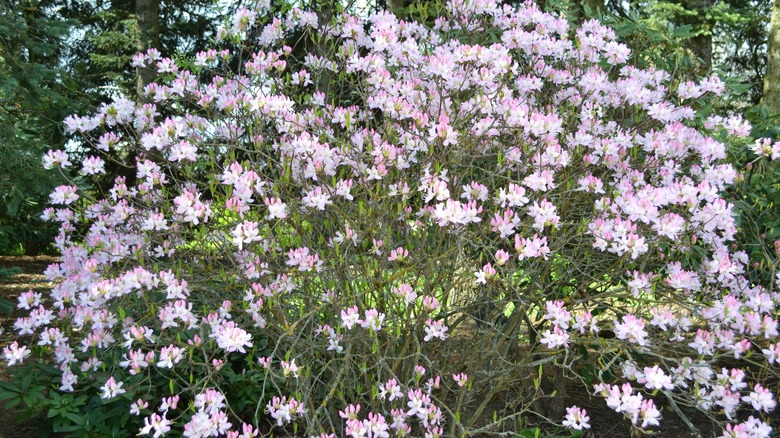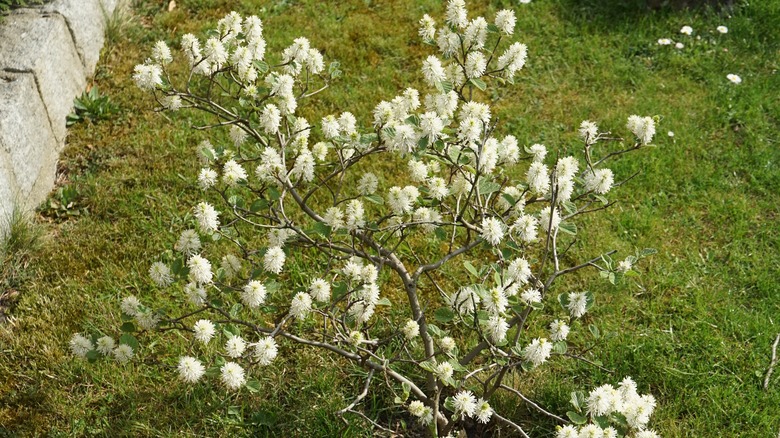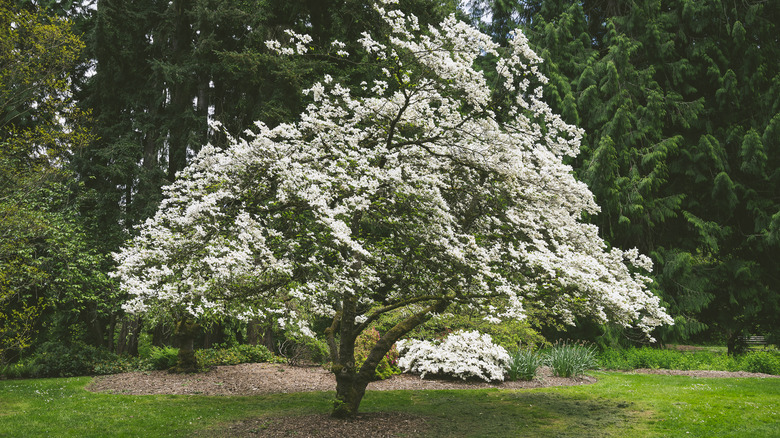16 Early-Blooming Trees & When To Prune Them For The Healthiest Blooms
As the last remnants of winter snow melt away, a brigade of early-blooming trees begin their reign. From magnolia, chokecherry, flowering plum, forsythia, redbud, Japanese apricot, pussy willow to snowdrop, these natural rebels start to flaunt their flowers as early as January. That contrasts the sleepyheads (think fringe, crepe myrtle, and hawthorn), who typically unfurl their floral display from late spring to early summer. You can count on these pre-spring beauties for some much-needed variety and color amidst the monotonous expanse of your backyard.
These early flowering trees in your yard need more than admiration. Enter pruning. With each snip, you coax your early bloomers to focus their energy on sprouting fresh, show-worthy branches rather than repairing damaged ones, setting the stage for a robust floral display in the following season. However, pruning demands precision, and timing can make all the difference.
The best time to prune early-blooming trees coincides with the period after their show-stopping performance. This means shortly after the petals have faded, typically in late spring or early summer. But before you decide to dive into the world of these horticultural marvels, ensure your chosen tree suits your USDA zone. And while some early bloomers prefer a delicate balance of shade and sun, others demand a shameless bask in full daylight.
Ornamental cherry
Leading our compilation of early-blooming trees is the ornamental cherry, a masterpiece that traces its roots back to Japan and boasts show-stopping canopies laden with pristine white-to-pink flowers. Whether the variety is Yoshino, Kwanzan, or the gracefully sweeping Weeping Cherry, these delicate blossoms echo ancient traditions and seasonal celebrations. Complementing the spectacular floral show, the leaves subtly change their hue, shifting from bronze to dark green to flaming oranges as fall sets in. To ensure that the next year's blooms retain their vigor and maintain proper tree structure, prune these showstoppers after their dazzling display has concluded.
Flowering plum
Decked in dramatic plumage, the flowering plum unfolds an annual late winter and early spring spectacle with white to soft pink flower petals. As spring marches onward, the tree comes alive with a pomp of leaves, setting the stage for the incoming summer. Flowering plum's introduction to summer is accentuated by its small drupe-like fruits, perfect for use in jams and jellies. With an oval crown and sleek, gray-to-reddish bark that adds depth to its allure, this flowering plum tree thrives mostly in USDA zones 5 to 8, relishing full to partial sun exposure. It's best trimmed right after flowering season.
Magnolia
The magnolia tree is among the first to awaken in spring, unfurling fragrant blossoms in myriad hues, from white and yellow to purple. This deciduous family member adorns its bare branches with blossoms before its large, glossy, elliptical leaves appear. The different magnolia varieties favor hardiness zones 4 to 12 and full sun to partial shade, and those in excessively arid regions can benefit from a touch of afternoon shade. The sheer diversity in size and shape makes them fit seamlessly into many gardens, whether as towering trees or plush shrubs. Caring for magnolia trees involves mindful pruning when the flowers start their decay.
Eastern redbud
Next in our earliest blooming trees compilation, we meet the eastern redbud, a small to medium-sized deciduous tree that demands attention with its striking clusters of pink to reddish-purple flowers. Our eyes are treated to these captivating blooms come early spring (March to May) before the leaves make their debut. Redbud's heart-shaped foliage shifts from green in summer to a cheerful yellow in the fall. The tree's spreading, flat or rounded crown makes it a great fixture for landscapes in hardiness zones 4 to 9. Right after the redbud ends its blossoming season in spring, diligent pruning becomes crucial to exuberant growth in the coming year.
Japanese apricot
Japanese apricot (Prunus mume)is a quick-growing Rosaceae family member best suited for hardiness zones 6 to 9. Its pink, intensely aromatic flowers burst forth in late winter, and look beautiful with a backdrop of snow. The blooms arrive before the leaves make their grand entry in late spring and early summer. As the sunny days of summer roll in, the branches of this deciduous tree are adorned with small, round, yellow drupes that carry significance in cuisines and medicine. Wait until the fruiting stage has started to prune a mature Japanese apricot, ensuring an unbroken cycle of vibrancy.
Yellow buckeye
Aesculus flava, a majestic deciduous tree of the Sapindaceae family, is commonly known as yellow buckeye, named for brown seeds that are reminiscent of a buck (deer) eye. As spring awakens, yellow buckeye dominates with showy, upright clusters of vivid yellow flowers. Following the flowers, this tree provides smooth, pear-shaped fruits enveloped in a protective husk. Its majestic presence continues into fall, with palmate compound leaves flaunting dynamic shades of yellow or orange. The yellow buckeye tree demands space to flourish, owing to its desire to stretch wide and tall. Pruning in late winter is best.
Pussy willow
Behold the enchanting pussy willow (Salix discolor), a compact deciduous tree known for its furry catkins that emerge in the early weeks of spring. The lovely catkins, adorned in shades of gray or silver, contribute to this evocative name and are a favorite haunt for early pollinators like mason bees. USDA zones 4 to 8, full sun and wet soils are ideal for this tree that holds cultural significance in religious and traditional celebrations such as Palm Sunday. Pruning after the blooms have peaked will ensure the tree will stun once more when the flowering cycle circles back.
Snowdrop
The Halesia diptera, a deciduous shrub or small tree of the Styracaceae family, has a graceful appearance that perfectly captures the resilience of early spring. Its common name, snowdrop tree, fittingly describes the charming clusters of white, bell-shaped, down-hanging flowers that bloom amidst frosty surroundings before the deciduous leaves unfold. As fall approaches, its foliage assumes a yellow hue before dropping. Snowdrop favors USDA zones 6 to 9, six or more hours of full sun daily, and moist, well-draining soils with acidity levels below pH 6. It doesn't tolerate drought well. Prune the snowdrop tree after its flowering period concludes.
Forsythia
Among the flowering trees that will bring romance to your yard, the forsythia is a group of deciduous shrubs that erupt with vivid yellow, bell-shaped flowers in early spring. These blooms stage an eye-catching spectacle for one to two weeks. As if on cue, forsythia's rich green lanceolate leaves emerge soon after the blossoms begin to dwindle. The fast-growing shrub, sculptable into a small tree, finds its footing in diverse conditions: full sun to partial shade and a broad spectrum of soils in USDA zones 5 through 8. A mid-spring prune will suffice for a thriving bloom next season.
Witch hazel
A spellbinding surprise rising through the chill of winter is the witch hazel, a deciduous, small tree from the Hamamelidaceae family adorned with fascinating, spidery flowers in colors ranging from warm yellow to rich red. These perfumed petals reign for as long as two months. As the seasons shift, so does witch hazel's spectacle — its foliage turns vibrant golden during the fall. In spring after the witch hazel flowers fade, but when the leaves wait to unfurl, is the time to prune. You want to curtail overgrowth but prioritize dead, broken, crossing, and vertical branches.
Red maple
The red maple is a large deciduous early flowering tree known for its striking beauty and year-round allure. Its show kicks off in early spring with vibrant, rosy pink flowers gracing the bare branches before the arrival of verdant foliage. Summer brings lush green leaves that provide a cool haven beneath, along with food and habitat for local wildlife. In fall, red maple leaves undergo a fiery metamorphosis manifesting in yellow, orange, or red hue. Come winter, its grayish bark starkly contrasts the surrounding snow. Refrain from pruning until summer — doing otherwise might inflict excessive sap bleeding.
Serviceberry
Renowned with a multitude of titles— juneberry, sarvisberry, chuckle pear — the enchanting serviceberry tree is a herald of seasons. Among the earliest blooming trees, it's an urban landscaper's dream come true, with its white, fragrant blooms signaling the onset of spring. Summer brings an abundance of dark berries, while fall ushers in an astonishing foliage display of yellow to red. Caring for serviceberry includes attentive pruning in the waning days of spring, just as the blooms begin to fade — the petals last no longer than a week. Excise overcrowded lower branches and thin out the upper foliage.
Callery pear
Callery pear unveils a breathtaking sight before leaf-out, its branches laden with a cloud of delicate white flowers. The tree's glossy, dark green leaves then complement its fall transformation, bursting into a vivid spectrum of orange, golden, maroon, and red. Despite its fragile wood that can succumb to breaking and splitting, callery pear trees are remarkably resilient. It can adapt and thrive in diverse growing conditions. The pruning window opens during winter dormancy before the first buds form in spring. Remove any damaged or diseased branches, then thin and shape the canopy for an awe-inspiring masterpiece.
Pinkshell azalea
Native to the Appalachian mountains of North Carolina, the pinkshell azalea tree (Rhododendron vaseyi) manifests its beauty in a cascade of delicate pink-to-white, funnel-shaped blossoms with orange spots. It blooms early, sometimes as early as March, often before the tree unfurls its first leaf. As the tree steps into the fall, it dons a robe of red foliage. Flourishing ideally in USDA zones 5 through 7, this deciduous dazzler demands full to dappled sunlight and favors moist, acidic, and well-draining soils. Hold your pruning shears after the blossoms fade to ensure the spectacle recurs year after year.
Fothergilla
Fancy a fragrant, hassle-free, early-blooming substitute for magnolia or serviceberry trees? The fothergilla (Fothergilla gardenii) is an excellent choice. Possessing honey-scented, bottlebrush-like white blooms that weave into fine-textured, feathery clusters, this beauty announces spring's debut in early April. This spectacle persists for two to three weeks, with the grand finale being foliage decked with hues of rich oranges, reds, or yellows in the fall. Acclimated to USDA zones 5 to 8, this virtually pest and disease-free deciduous flourishes with a blend of full and dappled sunlight. Post-flowering in late April marks the prime time to trim and tidy fothergilla.
Flowering dogwood
Hailing from northern Mexico and eastern North America, the flowering dogwood tree bursts into a spectacular, long-lasting display of white to pinkish blooms in late winter or early spring. Between the waning days of summer and fall, radiant oval red drupes grace the branches. Take heed: its deceptively attractive fruits, while fit for wildlife, spell ill for human consumption. The early flowering tree relishes sunshine and well-draining soils of pH 6 to 7 in USDA zones 5 through 9. As for dogwood tree care, late winter and early spring serve as the optimal window for mindful pruning.
